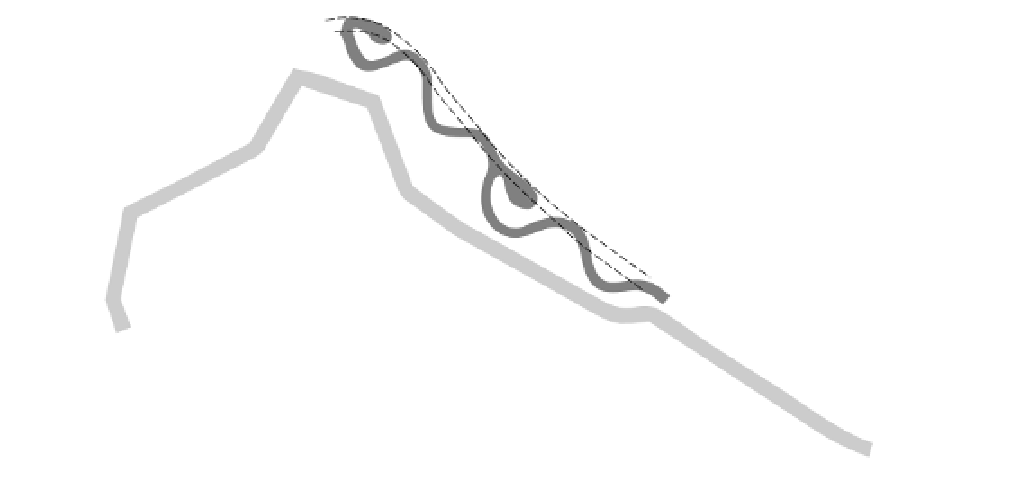Environmental Engineering Reference
In-Depth Information
increase flooding in vulnerable highly urbanized
areas is still not available. In continental Europe the
pressure not to change old flood-alleviation ways is
exacerbated by the trans-boundary nature of rivers.
Those countries where the precautionary principle of
highly engineered rivers and flood-defence systems
is widely applied are often at the 'end of pipe'. The
Netherlands is just one example where the government
has little control over what they receive from the Rhine
and Meuse and until a more uniform approach to the
management of the rivers is adopted such countries
will be cautious about altering existing approaches.
There is hence a need for catchment-wide planning
to increase catchment flood storage especially to
benefit downstream river reaches.
schoeniclus
) or a southern damselfly (
C. mercuriale
)?
Many current cost-benefit analysis systems cannot
adequately integrate biodiversity, aesthetics, public
enjoyment and natural-heritage issues. More difficult
still is proposing an economic justification for the
restoration of a previously degraded river system, on
the basis of its naturalness. Fortunately the Habitats
Directive 92/43/EEC (EC 1992a) has required Member
States to protect rare habitats and improve them to
'favourable condition' habitats where rare species live.
Although at present it only applies for the designated
species, it has provided a means of protection, and
justification of expenditure on restoration, as Member
States have accepted the legislation. It remains there-
fore early days in terms of concerted river-restoration
efforts but nonetheless there are still good examples
of rehabilitation and restoration throughout Europe
from which lessons can be learnt for the future.
11.4.3 Economic justification of restoration
Without accurate tangible costs to deter floodplain
development and instigate river restoration, much
restoration work is undertaken piecemeal and on an
opportunistic basis. Directly comparing the cost of a
road-improvement scheme and the value of floodplain
woodland is still, for example, very difficult. How much
value for example can be assigned to an otter (
L. lutra
),
a water vole (
A. terrestris
), a reed bunting
11.5 River and floodplain restoration
There is no simple solution to restoring rivers and their
floodplains. Each project needs to be considered on
its own merit. In some cases a previously straightened
reach may be restored to a meandering form (see
Fig. 11.4), bringing with it the added benefits of
(
E.
S4
N
S3
0
100 m
Existing
weir
S2
new meanders
original course
willows
S1
Footbridge
Land fill
Fig. 11.4
Diagram of a meandered section (S1-S4) of River Skerne, Darlington, County Durham, UK.






























